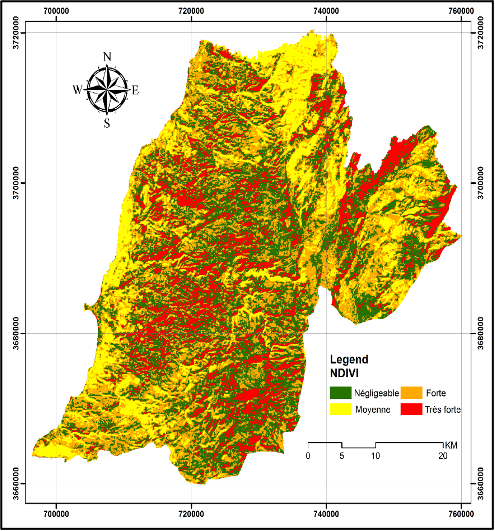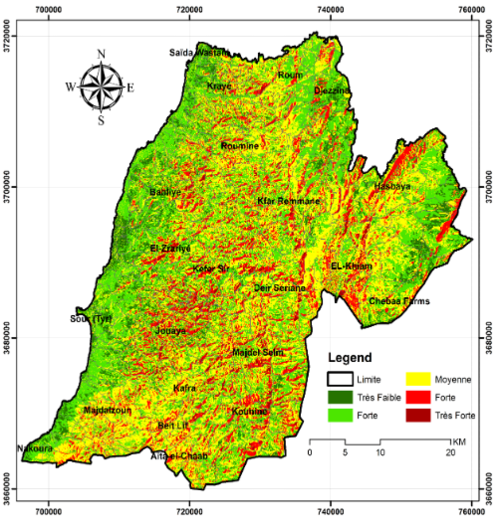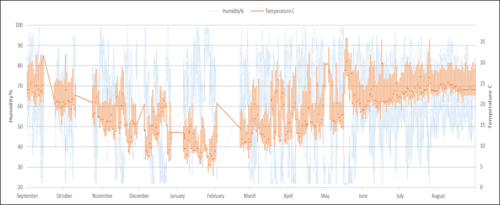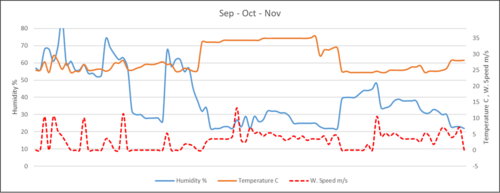Satellite-based Approach for Forest Fire Prediction: Case Study from Lebanon (Farhat et al.).
Generated NDVI for the studied region
Map of (TSFI)
Monthly variation of temperature and humidity
Temperature’s variation and humidity with wind speed depending on the three determined months (Sep- Oct.-Nov.)
Prof. Dr. Naser Farhat
Students : Mohammad Mehyddin, Hasan Ibrahim, Batoul Fadel, and Ali Sheib
Abstract
Forest fires are one of the severe natural hazards that rea frequently occur in the Mediterranean Region, as a result of the increased temperature resulting from global warming. The damage in the forest area has been exacerbated lately, making it necessary to adopt systematic tools based on scientific techniques. This can be performed by producing vulnerability maps for forest fires. The production of vulnerability maps can be attained by integrating several indices to determine the likelihood of fires. The most applicable indices are the Structural Fire Index (SFI), Fire Risk Index (FRI), and Hybrid Fire Index (HFI). However, the geographical location of the study area (exposed to hot and dry east winds during spring and autumn) requires adopting a new indicator for forest fire prediction, with enhanced methodology according to the temporal and spatial dimensions. In this study, satellite datasets were used to identify factors inducing and then mapping these factors as GIS layers with all required calculations. For this purpose, Sentinel-2 satellite images were processed with the Google Earth Engine (GEE) to compare the Normalized Difference Vegetation Index (NDVI) change, related to the Normalized Burn Ratio (NBR) changes at the same time. A comparison was also made between the years 2015 and 2020 for (NDVI) and (NBR) (Pre, Post). The analyzed datasets accounted for the indices are the: elevations, slopes, aspect, NDVI, temperature, humidity, wind direction, distance from residential areas and roads. The extracted geospatial data from satellite images for building GIS layers were manipulated using a Geographic Information System (GIS) which enabled the integration of different indices to end up with the vulnerability map for the forest fire. It represents a supportive tool for decision-makers in order to adopt the best forest fire prediction and preparedness plans.
Keywords: Vegetation cover, Temperature, Forest Fire, Slope, Sentinel-2, Lebanon.



